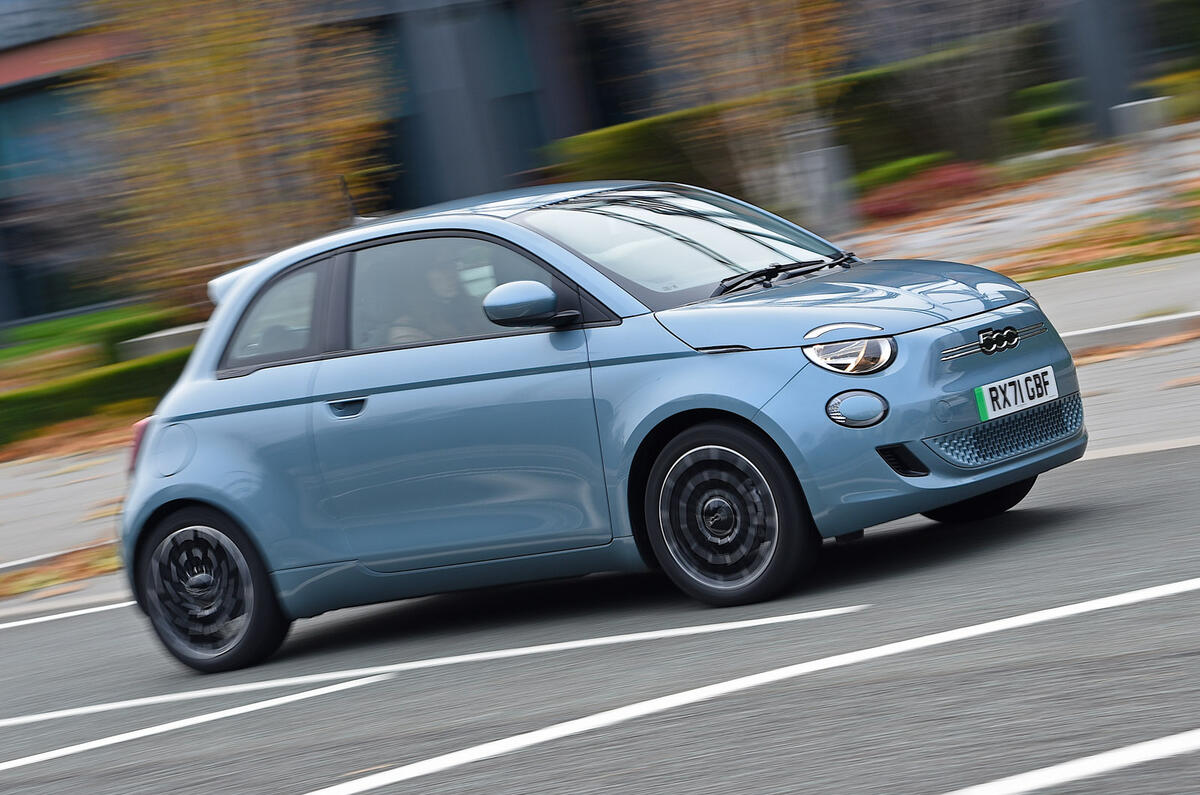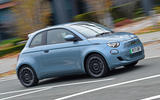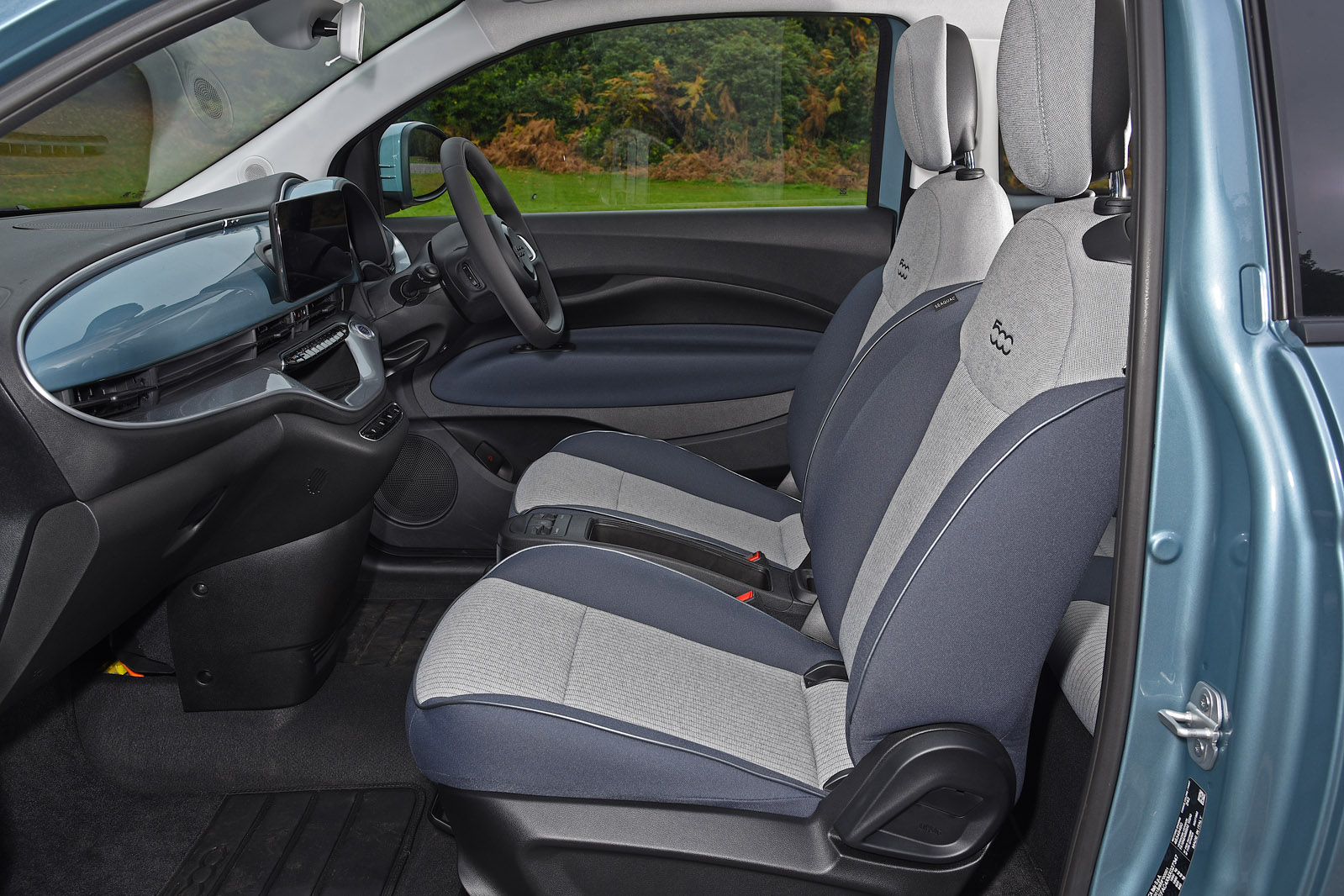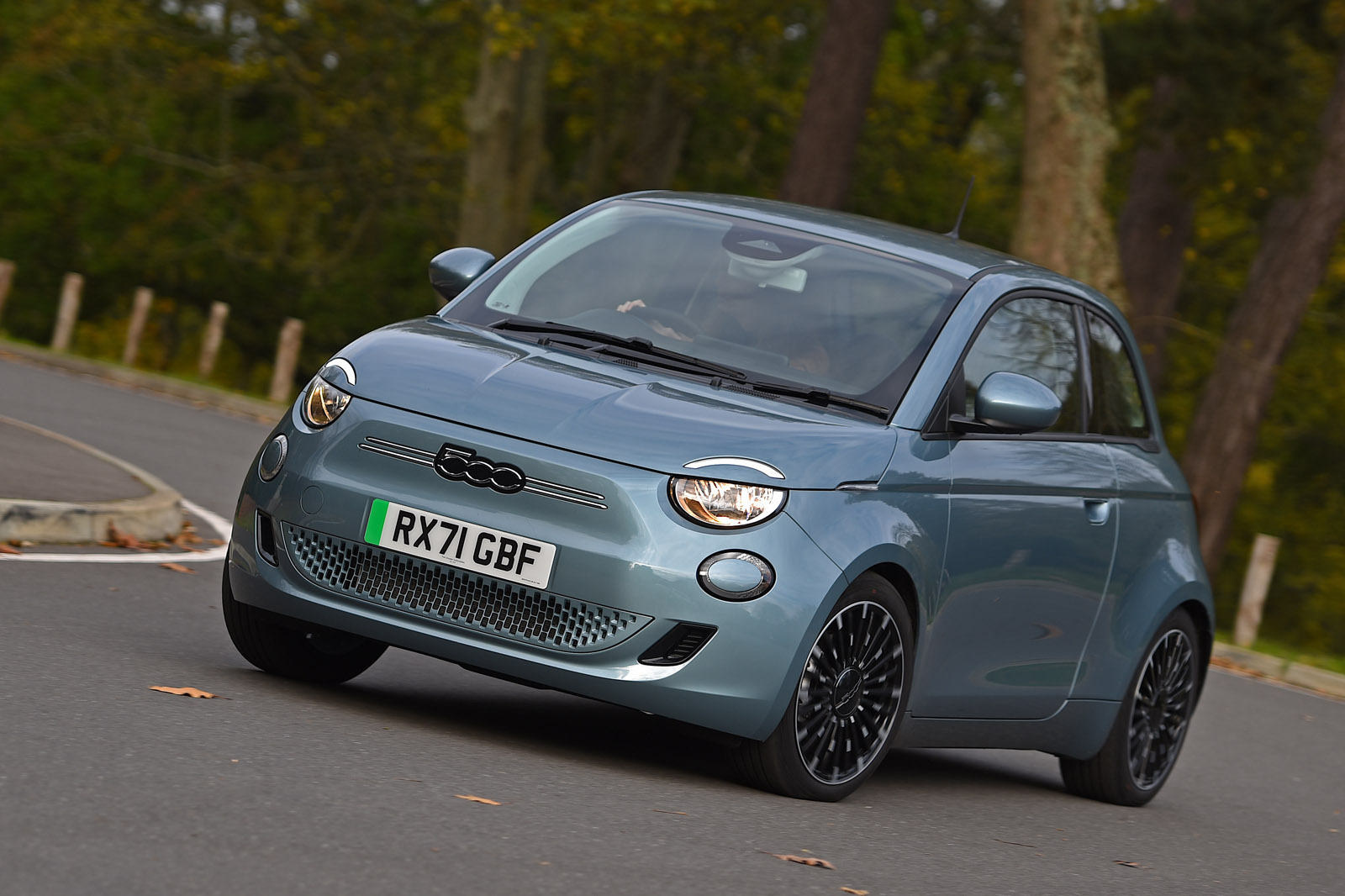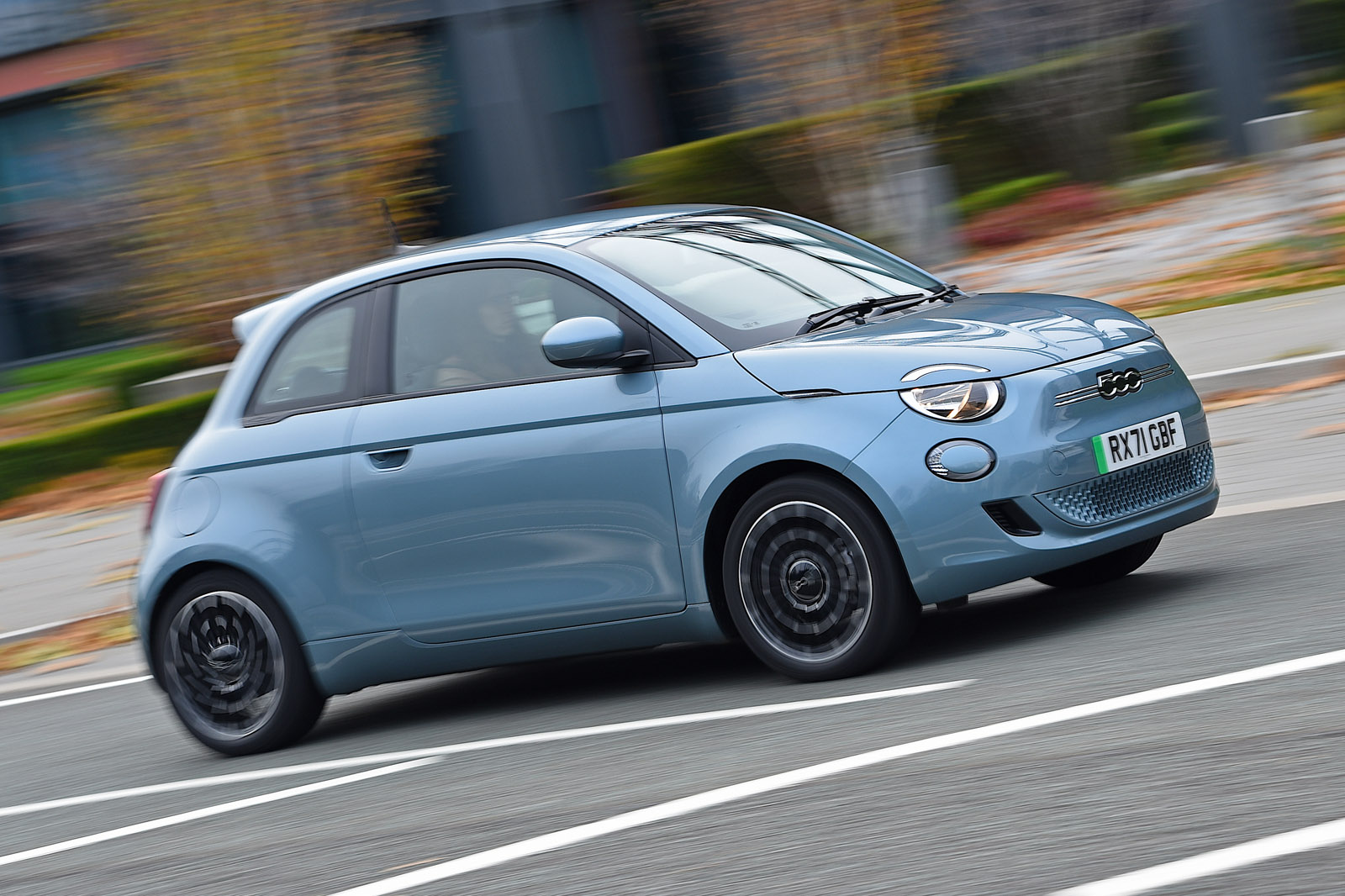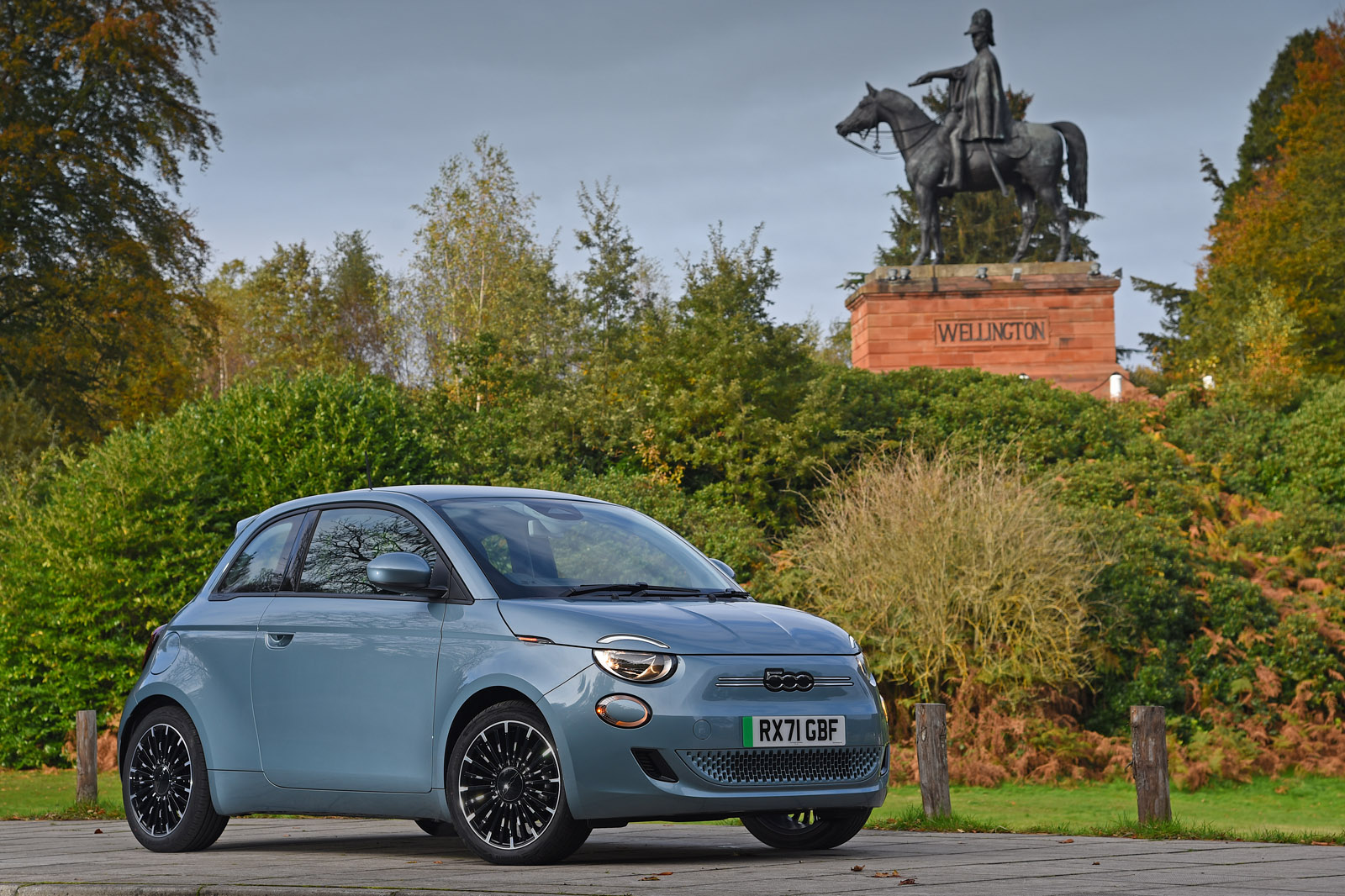The 500 is relatively affordable for an EV, but that evidently means it wasn’t the kind of car that was developed with a budget to spend around the cabin on soft-touch materials and expensive-feeling switchgear. Nevertheless, its designers have struck some good compromises here. A lot of the surfaces are hard plastics but the design is pleasingly retro, with body-colour panels in the dash and fabric inserts in the doors.
The row of climate control buttons is unique for the 500, and the physical controls are welcome but do feel flimsy and, being gloss black, are just as susceptible to fingerprints as the car’s touchscreen is. The heated seats (optional, but essential to preserve range in an EV) are controlled through the screen, though.
The seats are upholstered in a retro blue-and-white fabric made from recycled plastic. They’re comfortable by city car standards and don’t cause too many aches on longer journeys. The cushion is a little short and flat, and there is no adjustable lumbar support, but we’ve experienced much worse in this segment.
We do have some serious quibbles with the car’s driving ergonomics, though. First, base height adjustment is optional on the driver’s seat but really ought to be standard. Our test car didn’t have it and had a seat that felt set far too high. Head room is actually very good, but you end up looking through the top third of the windscreen, and vision is further hindered by the interior mirror, so if you’re tall it’s tempting to hunch, causing backache on longer drives.
More irksome still is that Fiat’s right-hand-drive conversion is particularly poor. The pedals are positioned relatively centrally but there is a big centre console that intrudes into the footwell, making very little room for your left foot. There is a paltry effort at a footrest, a narrow bit of plastic trim on the wall of the footwell, but your foot often slides off it, and then under the brake pedal, which can be very annoying. Interior space is as expected from a small car: limited. With the front seats in a typical position, adults couldn’t really sit in the back on account of both the limited head room and leg room. For younger children, though, the second-row seats are usable enough with two Isofix points.
The 50/50-split folding rear seats are standard from Icon trim up and leave quite a step in the car’s loading area when folded down. The small boot at least has a flat floor otherwise, and is a usefully square shape.
Fiat 500 infotainment and sat-nav
The Italian brands are not generally considered leaders in infotainment systems, but Fiat has pulled out all the stops for this one.
The interface can seem slightly overwhelming initially as it tends to throw a lot of information at you all at once, but as soon as you get used to the layout, it’s quite logical and responsive enough. There is a permanent row of shortcuts on the left, and there is wireless Apple CarPlay and Android Auto functionality, which worked smoothly during our test and goes well with the wireless charger that’s available on most versions (you get only two wired USB ports in the car).
That all applies to the 10.25in screen you get in Icon and La Prima models. If you choose the base Action car, you don’t even get a radio – just a phone cradle and an app. A brief experience on the launch suggested this works fine, but a £850 Radio Pack offers an upgrade to a 7.0in screen.


